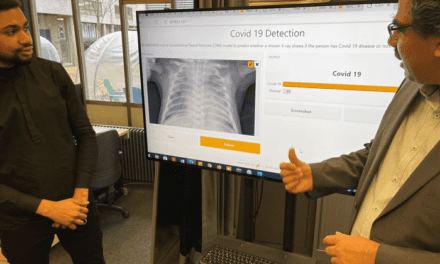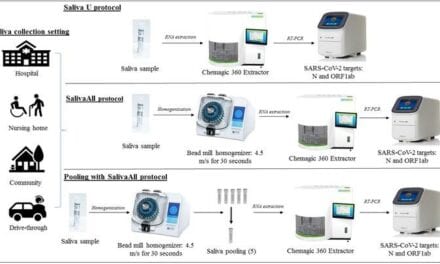A COVID-19 attestation tool, developed early in the pandemic by a Boston-based hospital system, was able to successfully screen its employees and visitors for symptoms of the virus and significantly reduce its potential spread through hospitals.
In March of 2020, the Massachusetts Department of Public Health and the Commissioner of Public Health issued an order that required hospitals to thoroughly screen healthcare workers for COVID-19, which led to Mass General Brigham’s development and launch of COVID Pass, a daily attestation tool that has been used to record more than 15 million attestations since its inception.
A new analysis led by investigators at Brigham and Women’s Hospital assessed the effectiveness of daily symptom attestation for health care providers across the Mass General Brigham system. Rates of cases were low, but more than 100 employees who attested to symptoms using COVID Pass went on to test positive for COVID-19 — reflecting the tool’s potential for preventing transmission events.
Results are published in Infection Control & Hospital Epidemiology.
“When the COVID-19 pandemic began, we wanted to take every step possible to make sure that our employees weren’t bringing COVID-19 into the hospital,” says senior author Hojjat Salmasian, MD, MPH, PhD, of the Brigham’s Division of General Internal Medicine. “COVID Pass is just one of many layers of protection, but it does give employees a moment to pause and evaluate themselves. And if they do attest to symptoms, the tool immediately prompts them to get tested and directs them to resources for how and where they can get that test done.”
The research team evaluated more than 2 million attestations over 99 days between March 23, 2020 and June 30, 2020 during the height of the pandemic in the Boston area. These included attestations from more than 65,000 employees across 52 hospitals and clinic sites within the Mass General Brigham system.
Employees who came to campus were screened daily before being permitted on site and those who attested to at least one symptom were referred to Occupational Health Services for further evaluation, including testing if indicated, before being cleared for work. Health care providers could also contact Occupational Health daily or get tested if they were concerned about exposure or symptoms.
Of the 2 million attestations evaluated, 99.9 percent reported no symptoms. There were 2,062 employees who attested to at least one symptom, with the most common symptom being sore throat (reported in 25 percent of symptomatic attestations). Of these, 905 employees were tested within 14 days and 13 percent tested positive for COVID-19.
“While the number of positive cases identified was low, attestations may have helped keep some of these unwell employees off campus and may have prevented some exposures and transmissions,” says Ellen Kim, MD, MPH, the lead author of the manuscript who is a radiation oncologist at Brigham and Women’s Hospital and Dana-Farber Brigham Cancer Center, and a Clinical Informatics fellow at Mass General Brigham.
During the same time period, 1,289 employees tested positive for COVID-19. During the two weeks before their positive test, 9 percent had attested to symptoms, 58 percent had no symptoms, and 33 percent had not completed an attestation. Investigators identified this last group as potentially concerned employees skipping attestation and directly calling Occupational Health or independently scheduling a test.
“COVID symptom attestation screening tools have been adopted by hospitals across the world,” says co-author Adam Landman, MD, interim chief information officer at Mass General Brigham. “This study provides initial evidence supporting symptom-based screening of health care providers for COVID-19.”
For healthcare workers who attested to symptoms, the research team cross-correlated that data with lab results from tests conducted at a Mass General Brigham facility.





